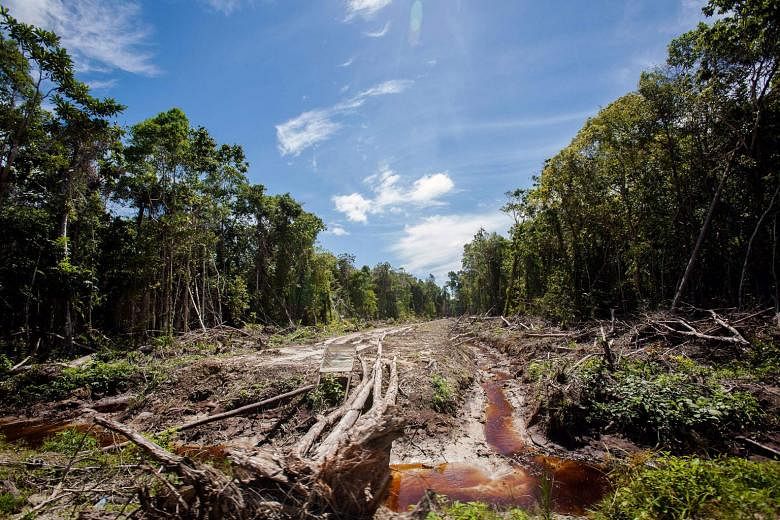Look out the window and you will probably see one of the most effective weapons in the fight against climate change - a tree.
The problem is, mankind has been cutting down forests, especially in the tropics, at an alarming rate, mainly for agriculture. The lure of profits from commodities such as beef, soya, palm oil as well as timber plus growing populations mean land clearing often takes priority over conservation and worries about climate change.
Widespread land clearing raises local temperatures, and rising global temperatures are, in turn, triggering more wildfires. Yet, big forest countries such as Indonesia, Brazil and the Democratic Republic of Congo (DRC) can limit these risks by being major players in using nature to fight climate change, by soaking up excess carbon dioxide (CO2).
"The tropical forest countries should be the highest priority, not only because they hold so much carbon and take up so much carbon every year, but because tropical forests also act as a global air conditioner," said Dr Deborah Lawrence, professor of environmental sciences at the University of Virginia in the United States.
"Forest protection does provide a positive feedback: Large forested areas promote rainfall and create a moister, cooler environment, enhancing the condition of the forest. That environment is less likely to produce fire and more likely to produce higher agricultural returns and healthier people," she told The Straits Times in an e-mail.
Trees soak up large amounts of planet-warming CO2 as they grow, and produce oxygen in return. On a large scale, forests are huge carbon stores and help regulate the climate by capturing and releasing water for rivers and clouds. Forests also provide livelihoods for millions of people in local communities.
Scientists say that if we get the policies right, forests, along with grasslands, mangroves and wetlands - even carefully managed farmlands - can become powerful tools that can soak up more CO2 and buy time in the quest to avoid dangerous climate change.
Plants and soils absorb about 20 per cent of mankind's greenhouse gas emissions, though this is offset by emissions from land use change, including land clearing and agricultural activities, a study published last year in the Proceedings of the US National Academy of Sciences said.
But in their analysis, the authors estimated that stopping deforestation, restoring forests and improving forestry practices could cost-effectively remove seven billion tonnes of CO2 annually, or as much as eliminating 1.5 billion cars.
Scientists have, for years, urged governments and businesses to see these benefits as a way to curb the pace of climate change. What is needed are better conservation and land management practices and law enforcement.
Putting a price on the value of nature can also help.
With mixed results, some banks and lending agencies have supported market mechanisms that put a value on every tonne of CO2 a protected area of forest locks away. Costa Rica pays landowners to replant trees as well as keep trees standing in watersheds for hydro dams.
But a lot more needs to be done to entice forest nations to see the climate value in trees.
Last year was the second-highest on record for tree cover loss in the tropics, down just slightly from 2016. The tropics lost an area of forest the size of Vietnam in 2016-2017, senior fellow Frances Seymour of the Washington-based World Resources Institute (WRI) wrote in a blog post in June.
Last year, tropical forest loss totalled 15.8 million ha, or about the size of Bangladesh.
Brazil lost 4.52 million ha, the DRC 1.47 million ha and Indonesia 1.3 million ha, data from the University of Maryland showed.
The main causes are clearing for agriculture and more severe and frequent fires and storms.
Put another way, if tropical deforestation were a country, it would rank third in CO2 emissions after China and the US, the WRI said, underscoring the scale of the problem, but also the solution if deforestation was halted.




